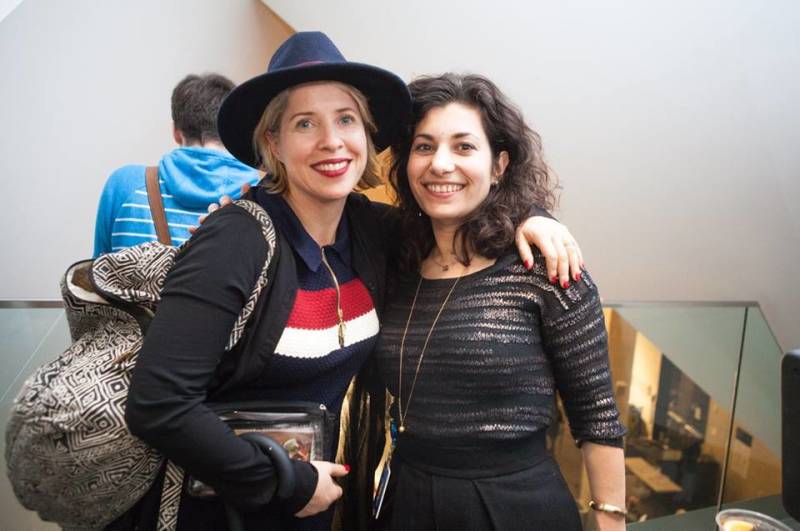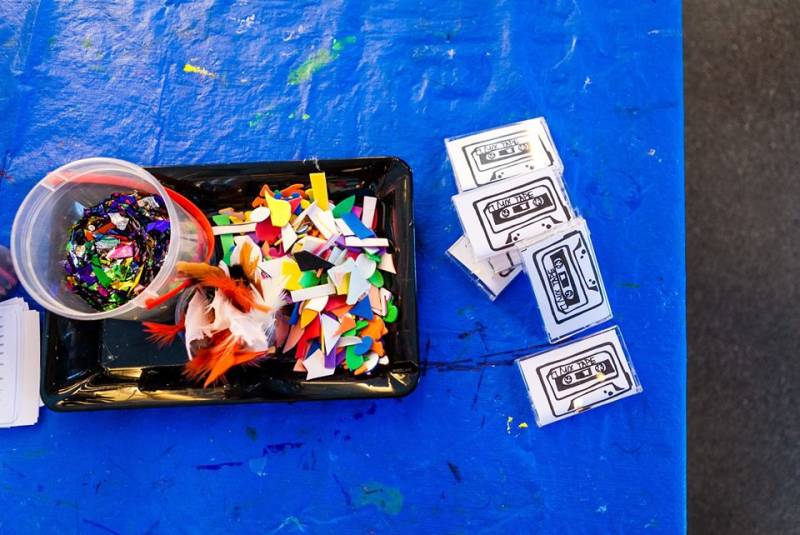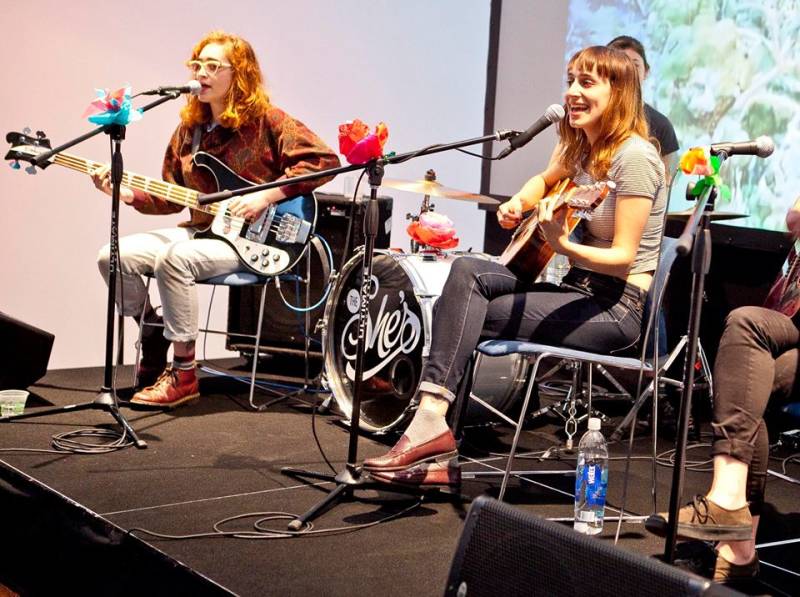‘Backstage Heroes’ is a series spotlighting the many movers and shakers working behind the arts scenes to make magic happen in the Bay Area. Guiding us is Hiya Swanhuyser, a veteran fan and all-around culture vulture who for nearly a decade helmed calendar duties for the SF Weekly — where her ‘Music Heroes’ series inspired this broader look at the arts — giving her rare personal insight into those toiling in the wings, but rarely in the spotlight.
When we think of museums, we think about display — about objects to view. But more and more, art institutions are interested in something else: we might call it “fun” or “hipster band night” or “craft tables,” but the umbrella term is programming.
While plenty of Bay Area museums have instituted evening cocktails and performance series, few have committed to the practice of highly social, interactive “extras” like the Contemporary Jewish Museum, and behind it is Gravity Goldberg, a woman with an extraordinary name and a deep love of her behind-the-scenes job.

Walk into the CJM’s lofty entrance hall, and you’re already smiling. The parade of globes on a chain track mechanism have caught your eye, but also, you could grab a bagel at Wise Sons, or there might be little tricks or games by the coat check. As associate director and curator of public programs, Goldberg’s work has only begun. Starting with the factoid that the average person looks at the average piece of art for just two seconds, her goal is to give the public permission to slow down a little, to take more time to absorb things.
“Art takes a little bit of the world and defamiliarizes what is familiar,” Goldberg says over green-tea lattes at a café on a recent sunny afternoon. “It brings us back around to where we can re-engage and re-understand, and maybe make more sense out of our lives.” Her events take place inside the museum’s installations, right in the galleries themselves.
Perched on a narrow bench seat with the café chattering away around her, Goldberg radiates a quiet, compassionate intensity. Later, she’ll tell me no one ever asks her to talk about her work. Too bad, since she’s got plenty to say and nearly five years’ worth of deep meditation on the moment — those two seconds — of seeing art. “People look at a deconstructed car that’s strewn across the floor, and they think there’s supposed to be a right answer … And part of what I’m trying to do is to say there’s not a right answer, but rather we’re supposed to bring what we have to art.”

With that philosophy in mind, she programs events in conversation with the exhibits, but also with the project of roughing up the idea of expertise; bringing it out of the art world. Talks have been about photomicroscopy, rock medicine, the CIA, and 20th century socialism. Speakers have included Ed Hardy, Greil Marcus, and at one particularly memorable panel, writer Michelle Tea, poet Eileen Myles, and writer-director Jill Soloway. Myles and Soloway met there and started dating afterward, Goldberg tells me. “So we’re proud of that.”
These are live events, after all, not static exhibitions, and Goldberg is often the responsible party, no matter what goes down. People yell at her, or complain randomly in long, handwritten letters. You never know what’s going to come out of someone’s mouth, she says, be they audience or presenter. “And that’s half the fun of it!”
Goldberg’s the right person in the right place, obviously. As she describes her process — Invite poets? Dancers? Who has something interesting to say about this particular piece of art? — she says it’s about becoming completely immersed in the exhibit itself, researching, listening, thinking. She waxes slightly lysergic when I ask about her favorite part of the job. It’s the moment when anything is possible, she says, when “You’ve absorbed the content enough, and it’s kind of coursing through your veins, and it smells like the perfume you’re wearing, and you’re dressing to match the colors of the exhibition in your mind, and it’s just part of you.”
This, I think, is how you fight the two-second problem. Still, programming has problems a lot of jobs share: Too much email, not enough money. Museum workers are having the same hard time scraping by in an inflated market as anyone else. But the rewards are many.

“We’ve had a blast,” says Bonnie Simmons, Executive Director of the Bill Graham Memorial Foundation and an artist organizer for the Hardly Strictly Bluegrass Festival. “Gravity and I have been working together recently both on the Warren Hellman exhibit and now the Bill Graham exhibit.” (Check out KQED Music Editor Gabe Meline’s review of that exhibit right here.) Simmons says she and Goldberg are both “passionate” about their work, and that Goldberg excels at incorporating younger artists; supporting living artists is a big deal for the CJM.
In February, as part of the “Chasing Justice” exhibition, Goldberg invited a staff attorney at the Electronic Frontier Foundation to give a talk. Mark Rumold, who often works with the Freedom of Information Act, addressed the art of Arnold Mesches, who had FOIA-ed his own FBI file, heavily redacted, or “blacked out,” as they often are, and used it as the basis for a series of collaged paintings. The lawyer “looked at the redacted text, under the painting,” Goldberg tells me. “He said, ‘I know this looks really blacked-out to your eye, but to me, no. I still see words. And see the little codes written next to this black line? This means that under these black lines there’s a list of names of people who were informants.”
This is what she does: If the story of a lawyer who found meanings that even the artist himself couldn’t see in his own painting doesn’t get us to spend more than two seconds, well, it’s still “fun.” If you’d been there, though, looking at the Mesches painting while someone from way outside the art world completely recontextualized it, you’d have gotten a big electric bolt of permission: To slow down, to think your own thoughts, to make more sense out of life.